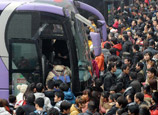
In the US, lingering stagnation has replaced solid growth, and unemployment hovers around 8 percent. Labor force participation has plunged and monthly job creation is significantly below what is needed for a solid recovery. Before the crisis, unemployment was below 5 percent. Now the target is 6.5 percent. Structural unemployment may have come to stay.
Unemployment in the eurozone has soared from 7 percent to 12 percent in the same period, and the region is in recession again. In the ailing southern periphery, the unemployment rate is twice as high and youth unemployment more than 50 percent.
In Japan, the third lost decade has begun. The economy is near stationary, and the worst days of population decline are still ahead.
Structural reforms can no longer be deferred in these major economies, which must soon cope with aging populations, rising healthcare costs and reduced growth. However, the awakening cannot occur until the era of highly accommodative monetary policies has eclipsed.
In the developed world, these monetary policies are not supporting growth and employment but translating into deleveraging, deflation and depreciation. In the emerging world, the same policies contribute to potential asset bubbles, inflation and appreciation. In adverse scenarios, such challenges could either slow down or disrupt the emergence of Asia as the global economic powerhouse.
In fall 2010, Brazil's Minister of Finance Guido Mantega warned of "currency wars',' following the Fed's QE moves. After two years of further debasing, currency rivalries are moving to a new phase.


















 Moments that melt your heart during the Spring Festival travel rush
Moments that melt your heart during the Spring Festival travel rush


![]()
